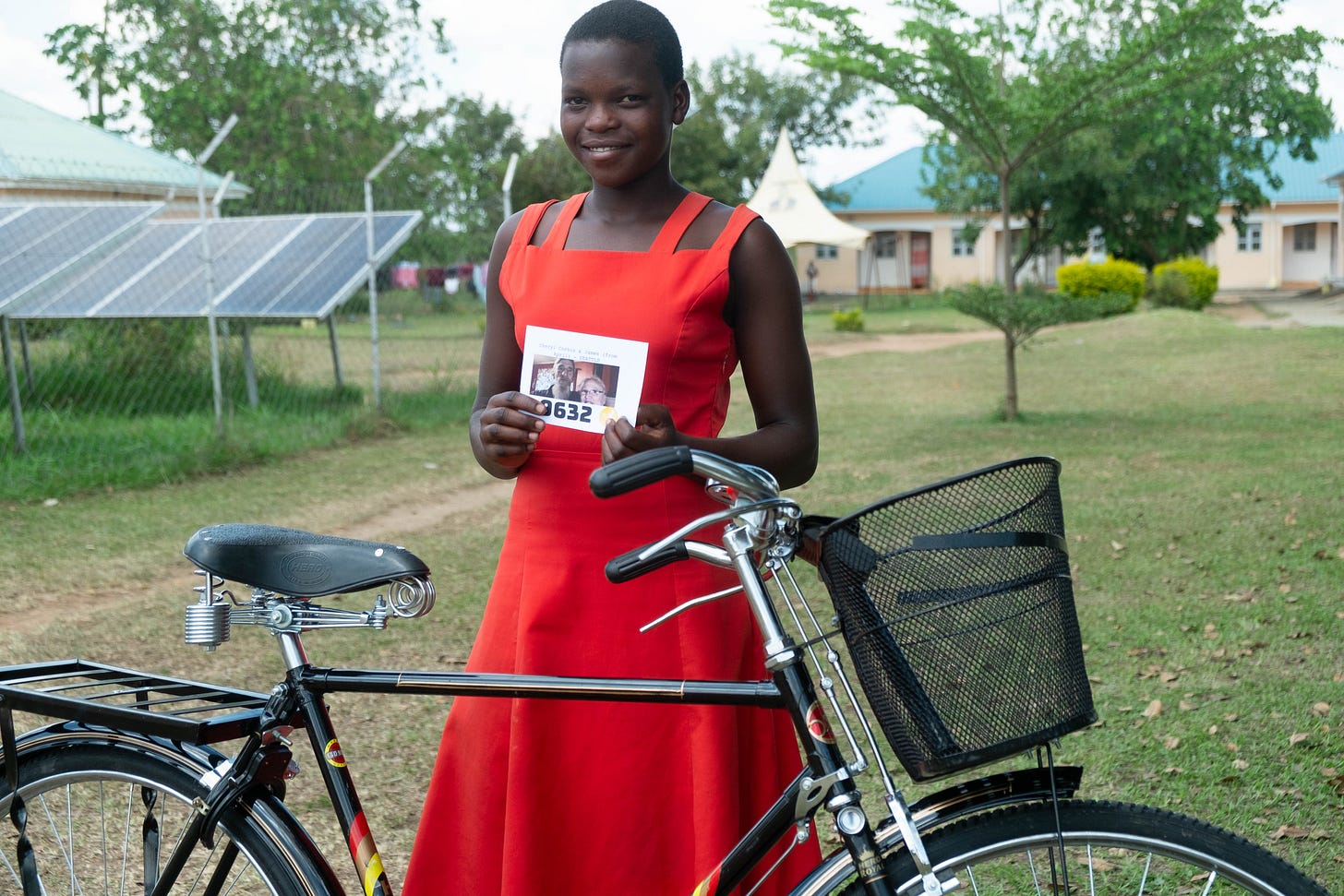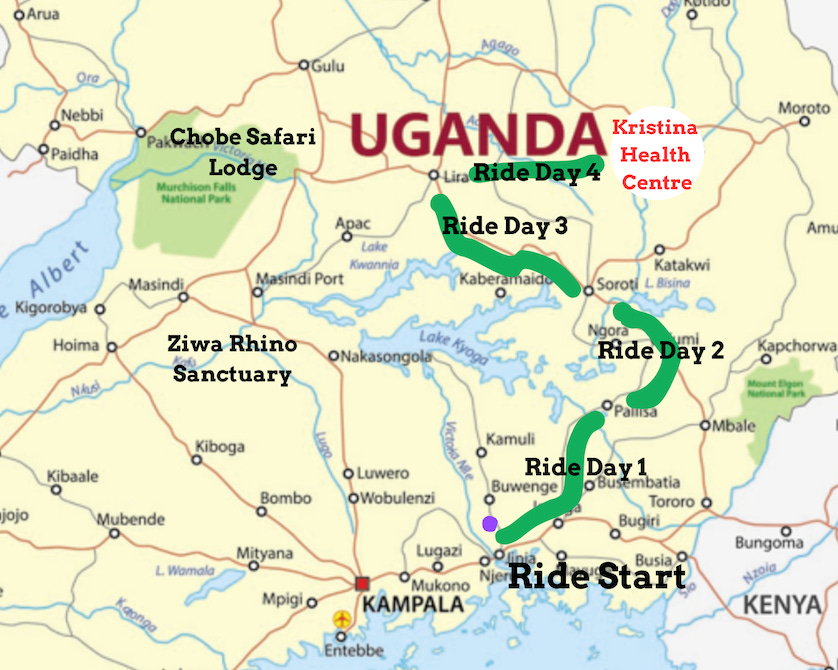Why We're Doing This: Part 2
Why would we pay a lot of money to ship a bike so that we can avoid riding the very bicycle that someone in Uganda would be delighted to be able to ride?
There’s an old joke among cyclists — mostly the middle-aged male version:
“Do you know the formula to determine the right number of bikes to own?
“It’s n+1 — where ‘n’ is the number of bikes you currently own.”
The joke gets a laugh among a specific set: those who always have their eye on the next bike, the one to round out the complement in the garage. Just one more for one other use: Road. Gravel. Mountain. Around-town. Fixed gear. Aero. (The joke typically gets a half-laugh from their spouses.)
It’s a joke that doesn’t resonate, though, with most of the world, where a single bicycle is a treasure, and where a second, third, or nth bike is an unheard-of luxury.
Among the people we visit in Uganda, a bike serves two purposes: transportation and conveyance. The same bike performs both functions, irrespective of surface, distance or rider size or type.
(Some bike brands have tried releasing multi-terrain type, all-in-one bikes; they’ll call it the “Swiss Army knife” of bikes. In that parlance, bikes in Uganda are blunt instruments: indelicate, imprecise, but in most cases effective if wielded with force.)
When we first started to imagine our upcoming ride, correlated with the delivery of bicycles sourced through 88bikes, destined for Kristina Health Centre in remote Northern Uganda, we wondered: Which ones should we bring? Gravel, right? How would we ship them there?
Then we pictured the girls we’d hand the bikes to, overjoyed at this new tool of freedom, access and possibility, and we next wondered: Why would we pay a lot of money to ship bikes so that we can avoid riding the very bicycles that people in Uganda would be delighted to be able to ride?
It quickly became clear: we need to ride the bikes we’re delivering.
So that’s what we’re going to take on: riding heavy, single-gear, coaster-brake steel bikes purchased in Uganda from just outside the capital, Kampala, to Kristina Health Centre, 240 miles to the north.
On rough roads.
Full disclosure: we may not ride these bikes the entire route. Of our six riders, I’m by far the most avid cyclist. I’ll introduce you to the others as our journey progresses; for now I can tell you that they’re all hearty, generous people, but they don’t typically ride for six hours in a stretch.
All of us, though, will live for some brief period every day — maybe 20 minutes; maybe six hours — like a Ugandan cyclist: standing and grinding up a hill, with no smaller gear to resort to; perhaps walking our bikes through standing water; eating not gels or bars but bananas and cassava — but even then we’ll have a shower and a hotel bed and maybe a Tusker waiting for us, and we’ll know that as long as our days might be, they’re few in number. Our ride is just four days long.
Before we know it, we’ll be back to selecting the proper bike for the type of ride — or deciding to drive, for that matter. But our memories will resonate with understanding what it means to ride a bike in Africa — or rather, to ride an African bike in Africa
.
Many of you have been kind enough to upgrade to a paid subscription to this Substack. Thank you! Soon after we return, I’ll post photos of receipts from 88bikes and Achon Uganda Children’s Fund for the pass-along of all subscription fees to these worthy organizations. If you haven’t upgraded to a paid subscription, please consider doing so — just for this year if you like!



